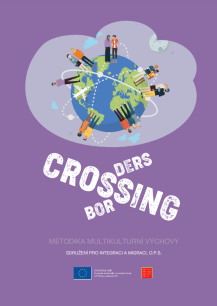Crossing Borders

Intercultural education and training contribute to creating respectful relationships between different cultures, aiming to avoid negative events in multicultural societies. This methodology, primarily for educators and school staff, provides (a) various ways to work with the theme of stories and facts in teaching, including media workshop procedures, (b) a detailed proposal of 4 teaching hours on migration (including activities, concepts, and different levels of difficulty for primary and secondary schools), and (c) a proven structure for discussions with guest migrants. The methodology also includes recommendations, comments from educators, a directory of methods, and materials (worksheets for individual activities, a glossary of terms, etc.).
In this methodology, the terms "migrant" and "foreigner" are considered synonyms, although there are some differences between them. The text exclusively uses the term "migrant" as it is preferable to "foreigner," which evokes an undesirable otherness. The term "foreigner" is used only where official documents use it.
The goal of the methodology is to address the distorted information often found in the topic of migration, which contributes to an unbalanced debate and incorrect public awareness of the issue. To enable students to form an objective opinion on the subject, it is necessary to provide them with multiple perspectives and relevant information. Educators play a crucial role in shaping students' opinions and attitudes toward migration and integration. This methodology provides instructions on how to promote mutual communication between students and foreigners and how to educate students about tolerance.
Migration should be included in teaching because it reflects historical events in our country, the region, and the world, as well as political-geographical ties between countries. Migration connects several disciplines (geography, sociology, economics, history, anthropology) and school subjects (geography, history, social sciences). Teaching about migration supports students' ability to see things in context and helps balance the influence of distorted information spread through various channels.
To include migration in the educational plan, it can be integrated into cross-curricular themes such as "Personal and Social Education," "Democratic Citizen Education," "Education for Thinking in European and Global Contexts," "Multicultural Education," and "Media Education." Migration is a complex topic, and it is recommended to include it in the basic educational areas, such as Language and Communication, Human and Society, Human and Nature, and Human and his World. For gymnasiums, the topic of migration can be included in the subject of Civic and Social Science Foundations (content-wise, migration intersects sociology, psychology, and law).